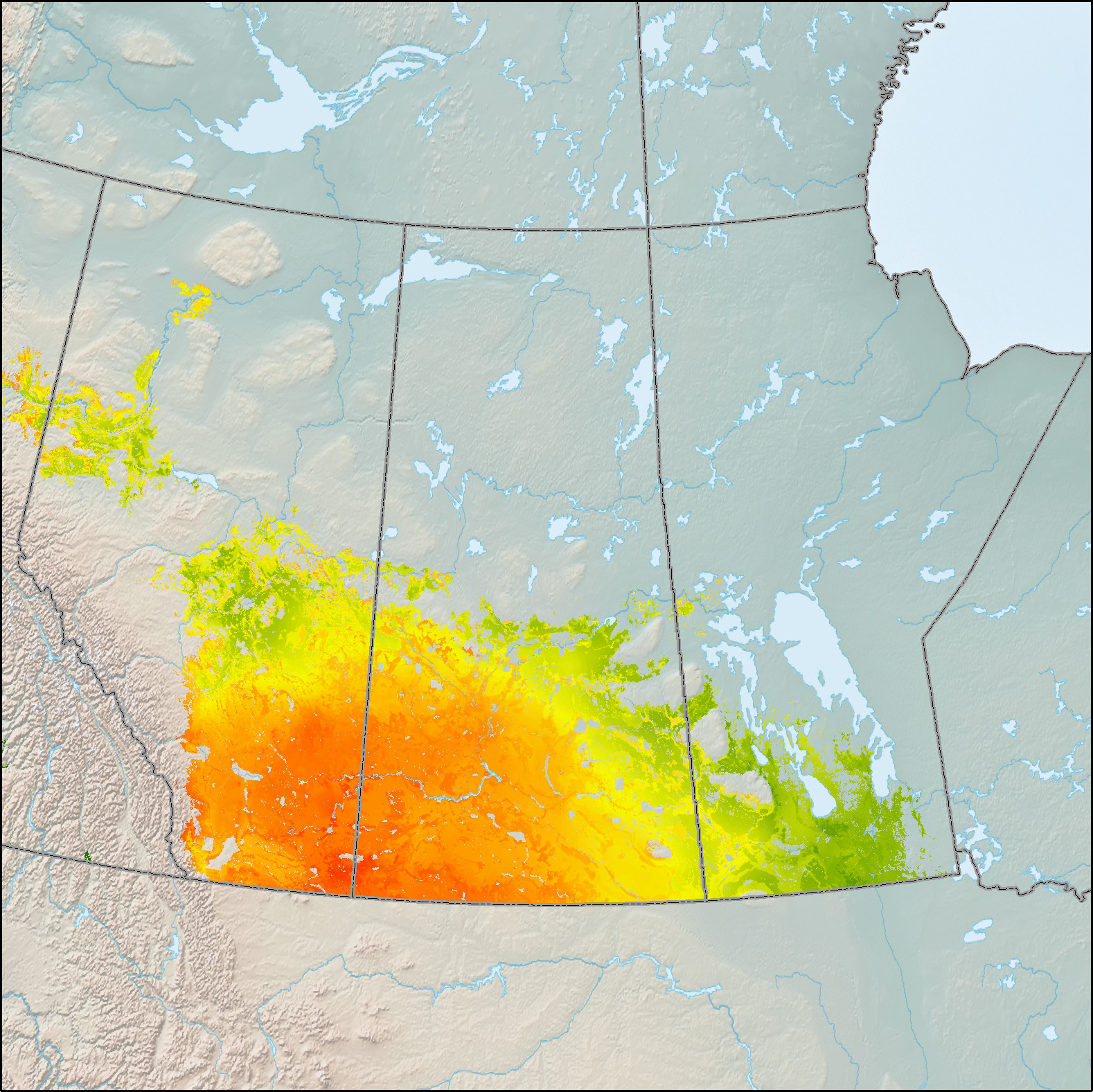Silviculture
Type of resources
Topics
Keywords
Contact for the resource
Provided by
Formats
Representation types
Update frequencies
status
-

This data depicts site suitability for the establishment of area-based Short Rotation Woody Crops (SRWC) of hybrid poplar on lands eligible (i.e. non-forested) for afforestation across Canada. Determining the feasibility of a large-scale afforestation program is one approach being investigated by the Government of Canada to increase Canada's potential to sequester carbon from the atmosphere and/or produce bioproducts and bioenergy. Large-scale afforestation, however, requires knowledge of where it is suitable to establish and grow trees. Spatial models based on Boolean logic and/or statistical models within a geographic information system may be used for this purpose, but empirical environmental data are often lacking, and the association of these data to land suitability is most often a subjective process. As a solution to this problem, a fuzzy-logic modeling approach to assess site suitability for afforestation of hybrid poplar (Populus spp.) and willow (Salix spp.) in Canada was developed. Expert knowledge regarding the selection and magnitudes of environmental variables were integrated into fuzzy rule sets from which estimates of site suitability were generated and spatially presented. The environmental variables selected included growing season precipitation, climate moisture index, growing degree days, the Canada Land Inventory capability for agriculture and elevation. Site suitability is generally defined as the fitness of a given type of land for a particular use. For this assessment, site suitability was defined as the fitness of edaphic, climatic and topographic conditions to establish and grow SRWC species at rates 8 times those of native species. Suitability index values range from 1-100, with higher values corresponding to higher suitability. Approximately 246,000 km2, or 38% of the eligible land base within Canada was found to be suitable for afforestation using Short Rotation Woody Crops (SRWC) of hybrid poplar and/or willow.
-

This data depicts site suitability for the establishment of area-based Short Rotation Woody Crops (SRWC) of willow on lands eligible (i.e. non-forested) for afforestation across Canada. Determining the feasibility of a large-scale afforestation program is one approach being investigated by the Government of Canada to increase Canada's potential to sequester carbon from the atmosphere and/or produce bioproducts and bioenergy. Large-scale afforestation, however, requires knowledge of where it is suitable to establish and grow trees. Spatial models based on Boolean logic and/or statistical models within a geographic information system may be used for this purpose, but empirical environmental data are often lacking, and the association of these data to land suitability is most often a subjective process. As a solution to this problem, a fuzzy-logic modeling approach to assess site suitability for afforestation of hybrid poplar (Populus spp.) and willow (Salix spp.) in Canada was developed. Expert knowledge regarding the selection and magnitudes of environmental variables were integrated into fuzzy rule sets from which estimates of site suitability were generated and spatially presented. The environmental variables selected included growing season precipitation, climate moisture index, growing degree days, the Canada Land Inventory capability for agriculture and elevation. Site suitability is generally defined as the fitness of a given type of land for a particular use. For this assessment, site suitability was defined as the fitness of edaphic, climatic and topographic conditions to establish and grow SRWC species at rates 8 times those of native species. Suitability index values range from 1-100, with higher values corresponding to higher suitability. Approximately 246,000 km2, or 38% of the eligible land base within Canada was found to be suitable for afforestation using Short Rotation Woody Crops (SRWC) of hybrid poplar and/or willow.
-

This data depicts the locations of Short Rotation Woody Crop (SRWC) research, development and demonstration sites established across Canada by the Canadian Wood Fibre Centre, its partners and/or private land owners. Short Rotation Woody Crops represent enormous potential with respect to future sources of bioenergy and/or sinks for carbon. Since 2002, the Silviculture Innovation Group of the Canadian Wood Fibre Centre has established over 1 000 hectares of "high yield afforestation", “mixedwood afforestation” and "concentrated woody biomass" SRWC systems across Canada. The refinement of the biological and operational components of these systems is ongoing to improve production efficiencies, reduce costs, and enhance site sustainability. Development, assessment and validation of value-chain options for the establishment, recovery, transportation, handling and conditioning phases of these short rotation woody feedstock systems is also being performed. The refinement and demonstration of operational logistics along with the identification of supply and value-chain options will promote the concept of SRWC from basic research and development to the point of commercial uptake.
 Arctic SDI catalogue
Arctic SDI catalogue